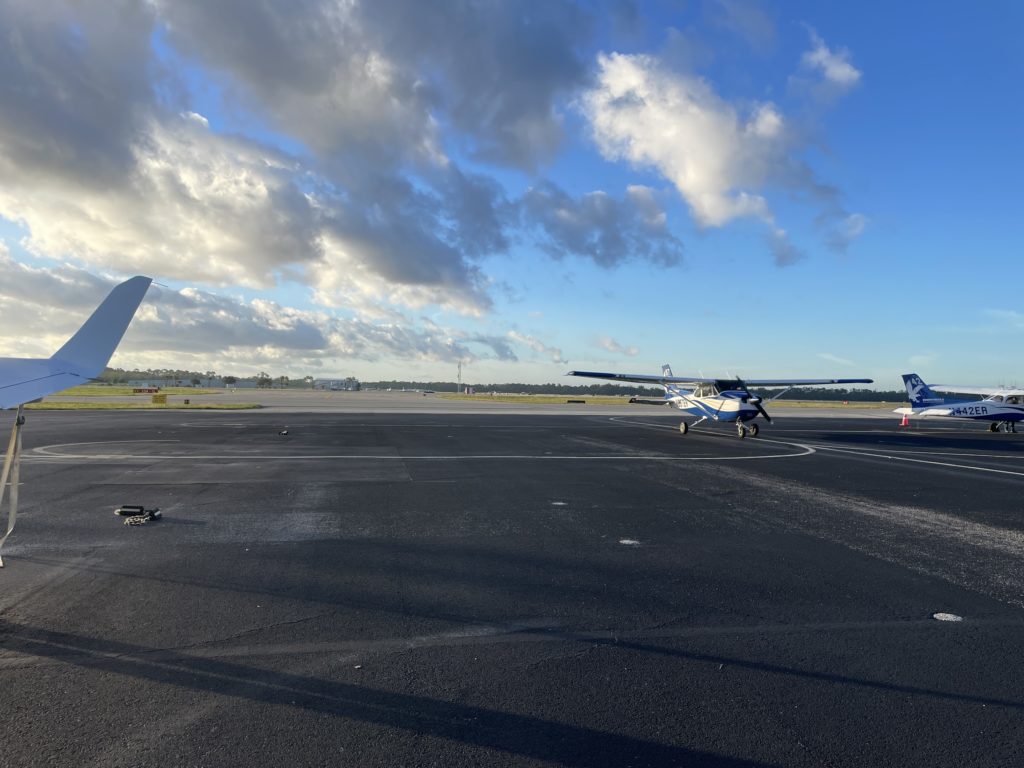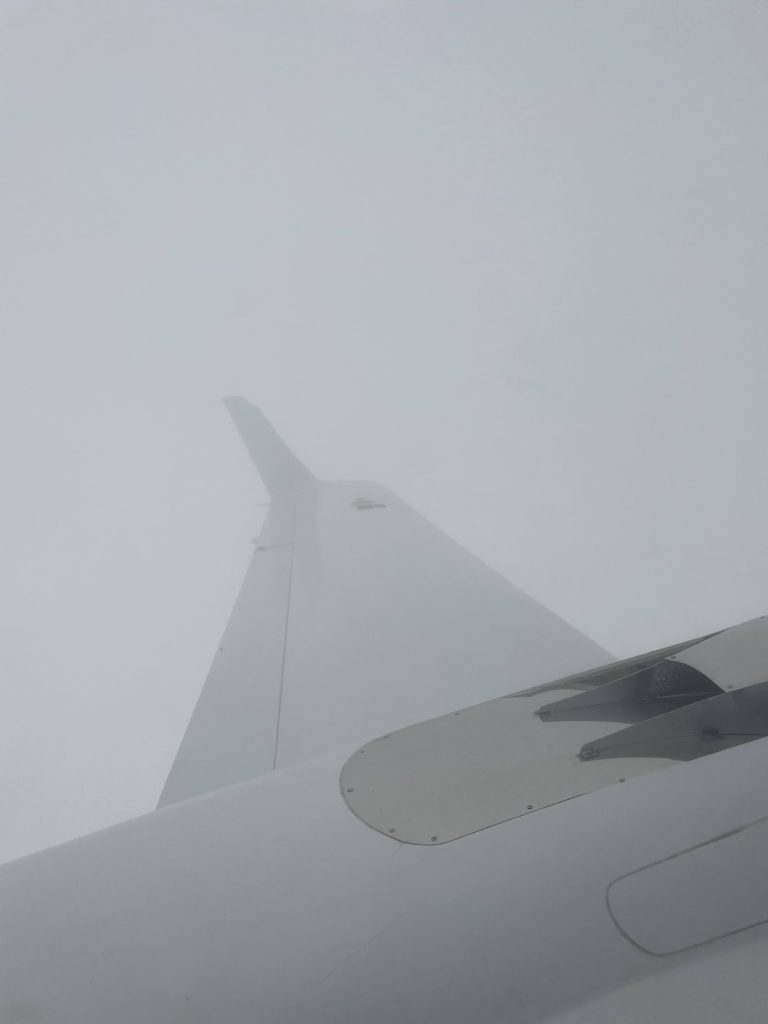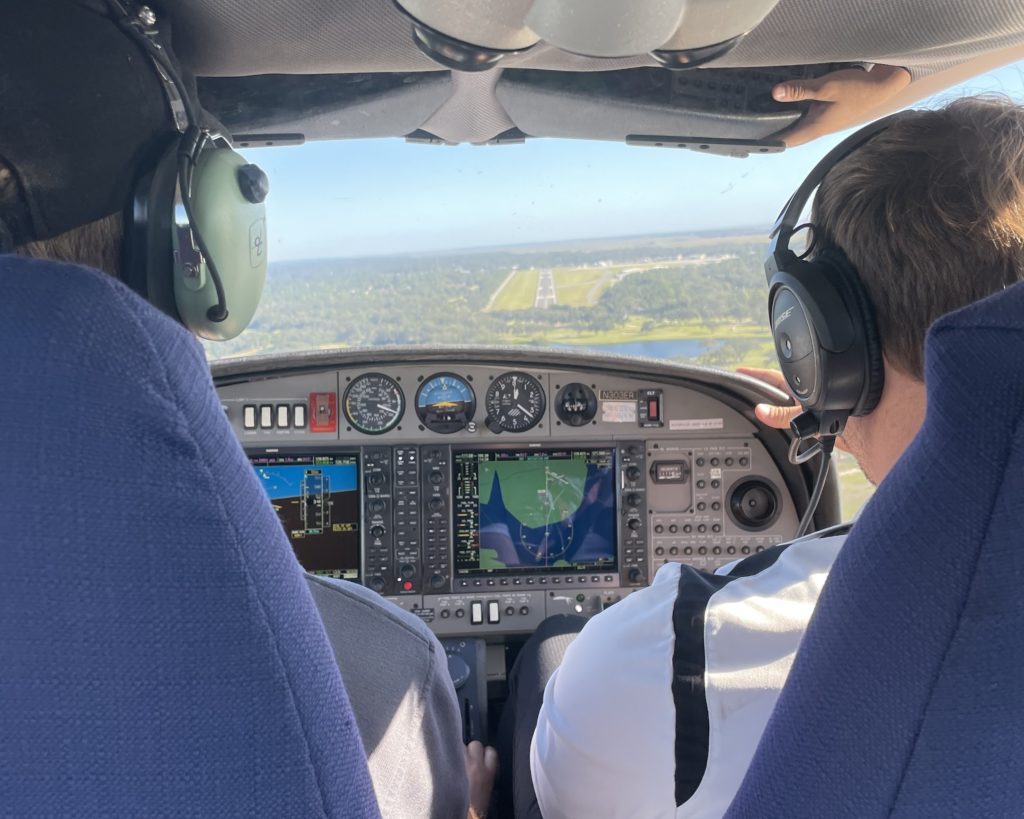Shine bright like a diamond.
So the last time I was in a small aircraft, I went flying with a few Riddle friends. The time before that, I went along with another friend, who was preparing for his commercial checkride. However, those were both small single-engine aircraft. The Colorado aircraft was a Piper Cherokee, and the other a Cessna 172. This semester, I got to experience the Diamond DA-42, Embry-Riddle’s twin-engine training aircraft for multi-engine students.
Chris has since passed his checkride, so I convinced him to take me along for a ride. All Embry-Riddle students are eligible to ride in the back seat of the aircraft (commonly referred to as “backseating”). The only condition is that the flight instructor and student must agree. The flight I got to backseat was his cross-country, flying from Daytona Beach (KDAB) to St. Simons Island Airport (KSSI). It was pretty cool- the Diamond moves a lot faster than the Cessnas.
To backseat a flight, first you stop at the dispatch desk with the student you’re accompanying. They’ll sometimes send you up to the flight supervisor’s desk, or sometimes they’ll give you the badge at the dispatch desk. Once you have the badge, you fill out some paperwork while the flight student begins their preflight activities inside. When the student is ready to go to the aircraft, someone from the dispatch desk will escort you to the plane (or you can wait for the flight instructor to escort you).
While Chris preflighted the aircraft, I mostly stayed out of the way and looked around. I hadn’t been out on the ramp since last year when a GoJet aircraft visited and students were allowed to tour it. It took about half an hour to preflight the plane, and then we waited for the instructor to come. And that’s when the real activity began.
As one would before any sort of flight, you have to get from point A (the ramp) to point B (the runway) on the ground. To do that, pilots need to gain clearance and instructions from air traffic control. After we got to the runway, the run-up checklist was performed to make sure the aircraft was still doing okay. Since it was, we waited for our takeoff clearance, and then we were off!
The flight was pretty cool. Chris had filed an IFR (instrument flight rules) flight plan, which meant he could fly through low visibility and clouds. We ended up flying through several clouds, and I can see why instrument ratings are important. Sometimes it was hard to see the wingtip of the aircraft, which was only several feet away.
The flight was around an hour each way, so within the hour we were coming up on St. Simon’s Island. I noticed that there were some heavy crosswinds on the landing, but Chris did just fine. We didn’t come to a full stop- we ended up doing a touch and go before turning around and heading back to Daytona Beach.
The flight on the way back was the opposite on the way to Daytona. We passed through the clouds again, flying back down the coastline. It was pretty cool to see Riddle from the sky- it’s always an amazing sight to see. When standing next to the buildings, they look huge, but from the sky, they look tiny.
After we landed, we headed back to the Riddle ramp. Since people are constantly walking on the ramp, pilots must taxi slowly and be conscious of their surroundings. Once we parked, Chris filled out some paperwork telling the school how long the flight was and where the aircraft was parked, and we walked back into the building.
I was free to go, but flight students do a debrief after each activity (ground instruction, flight simulator, or flight). It’s a way for flight students to discuss how the activity went- what the student did well and what they can improve on. Flight training at ERAU is rigorous, but I can tell that the university wants its students to succeed.
See you in the next blog post… and hopefully at Riddle!





